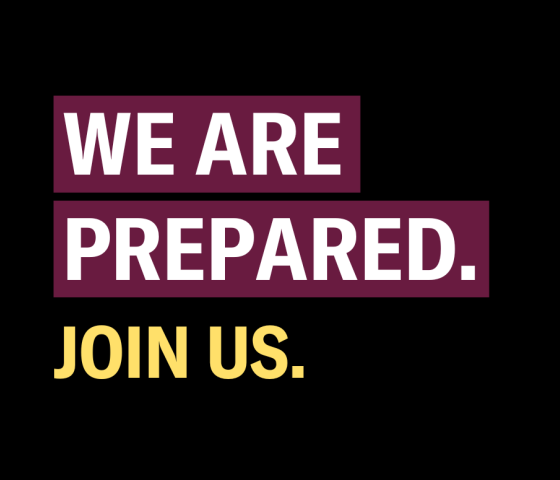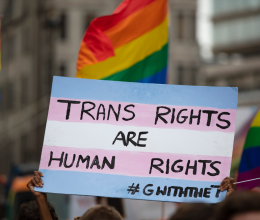By Arli Christian, ACLU Campaign Strategist, National Political Advocacy Department
Going through airport security is never fun, but it can be particularly difficult for transgender people. In addition to universal annoyances (did you remember to take off your shoes?) transgender people may not have identification documents that match who they are. Many airlines require ticket holders to select “male” or “female” when purchasing a ticket, something that may conflict with identity documents from the growing number of states that allow an ‘X’ gender marker on things like driver’s licenses. Finally, the “advanced imaging technology” body scanners — the ones that require you to hold your arms above your head — require TSA agents to select either a “male” or “female” scan, something that regularly results in additional and invasive searches for transgender travelers.
Fortunately, to mark 2022’s Transgender Day of Visibility, the Department of Homeland Security has announced a number of changes to make traveling while trans a little bit easier. These announcements are part of a larger push from the Biden administration to “advance equality and visibility for transgender Americans.” Here are four key things to know about the TSA announcements:
1. Full-body scans will no longer be based on gender.
The TSA will be replacing current “Advanced Imaging Technology” scanners — which require the operator to select a “male” or “female” scanning setting — with technology that will not be based on gender. Here’s how transgender model, actor, and public speaker Rosalynne Montoya described the current scanners:
“I definitely am not super comfortable going through TSA because I pretty much always set off the scanners as having some sort of ‘anomaly.’ I don’t feel safe. I don’t expect TSA agents to have my best interests at heart. I’ve been sexually assaulted, groped, grabbed, forced to remove my clothing [at TSA checkpoints]. I remember those times every time I go through TSA.”
The TSA stated that the new scanning technology will “advance civil rights and improve the customer experience of travelers who previously have been required to undergo additional screening due to alarms in sensitive areas,” with a rollout coming later this year.
2. TSA is working with airlines to promote “X” gender markers.
Many airlines require passengers to select “male” or “female” when purchasing tickets. The TSA is working with airlines to expand the use of “X” gender markers, and to allow passengers to self-select the “X” gender marker when purchasing tickets.
Including an “X” gender marker on identity documents and records provides an accurate option for people who are non-binary, intersex, or another gender. Every person should be able to select a marker, whether M, F, or X, that feels safest and most appropriate for them to move through the world.
3. TSA is streamlining identity validation.
It can be a nightmare to get through airport security with an ID that doesn’t match your gender presentation. At best, having an ID that doesn’t match your presentation can cause confusion and slow things down. At worst, it can result in harassment and missed flights. TSA is updating its policies and guidelines to “remove gender considerations” when verifying ID at an airport, which should reduce delays and make things easier for trans travelers.
4. TSA PreCheck and U.S. passports will add an “X” gender marker.
TSA PreCheck, a voluntary program that people can enroll in to reduce time spent at airport security checkpoints, does not currently offer an “X” gender marker. TSA is changing this, and will add an “X” gender marker to its Trusted Traveler and TSA PreCheck programs. “X” gender markers will also be available on U.S. passports beginning on April 11, 2022.
While TSA’s new scanning technology is supposed to be less likely to flag transgender flyers as potential security threats, TSA PreCheck allows participants to go through a simple metal detector, rather than the full-body scanners. As Rev. Yunus Coldman, an interfaith minister and a New York-based transgender man, said, “TSA PreCheck has saved so many trans people from bulls***. You don’t have to go through body scanners. You don’t have to take your shoes or belt off.”
These changes should make life easier for transgender travelers, but the devil is in the details. Only time will tell if these changes live up to TSA’s promises. In the meantime, TSA has updated its website for transgender passengers, with information about the changes listed above and how to contact TSA if you have any questions.
If you experience mistreatment by the TSA, you can fill out a complaint form online. You can also let the ACLU know about your experiences.







